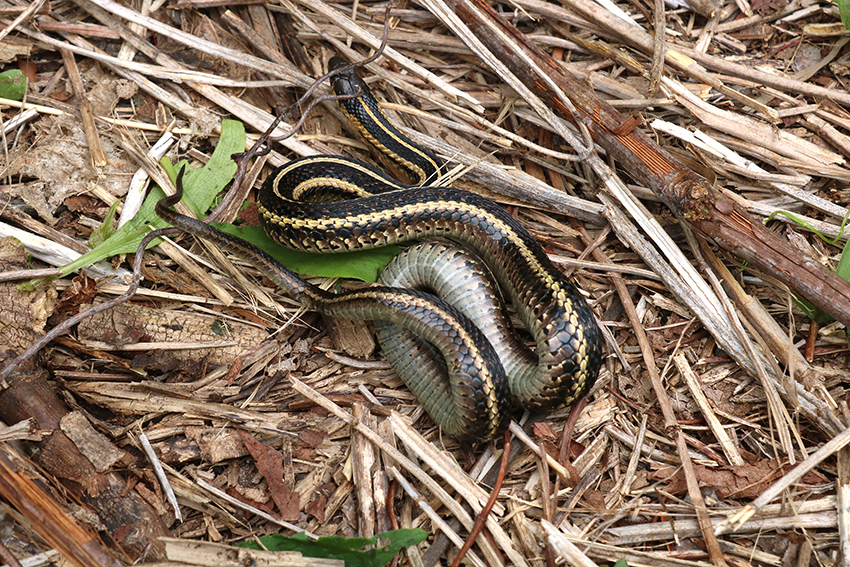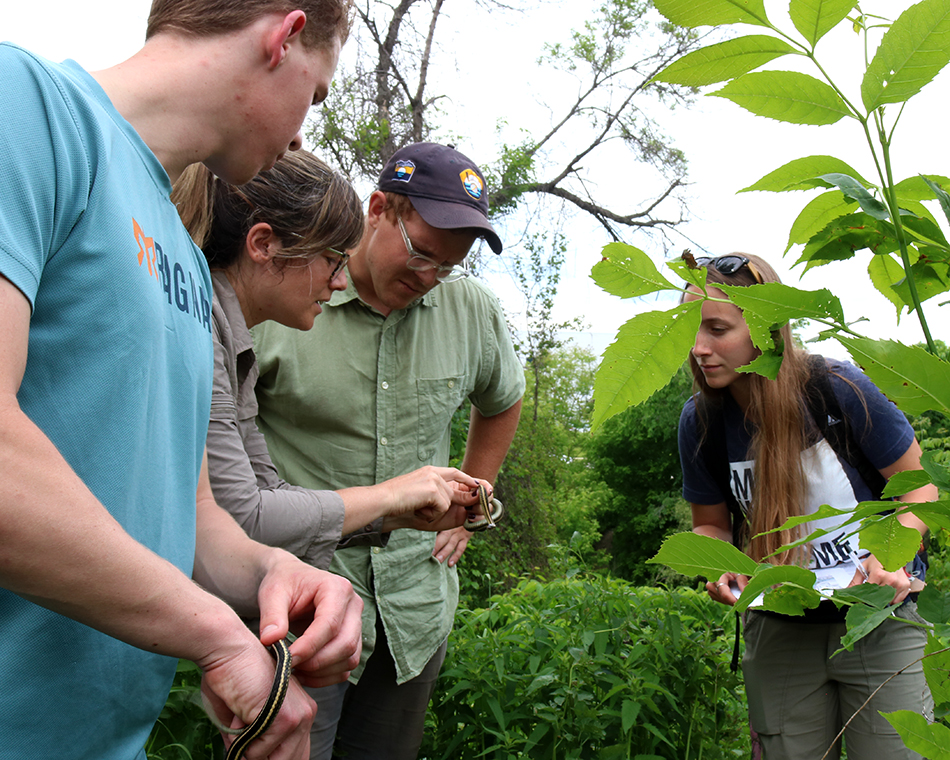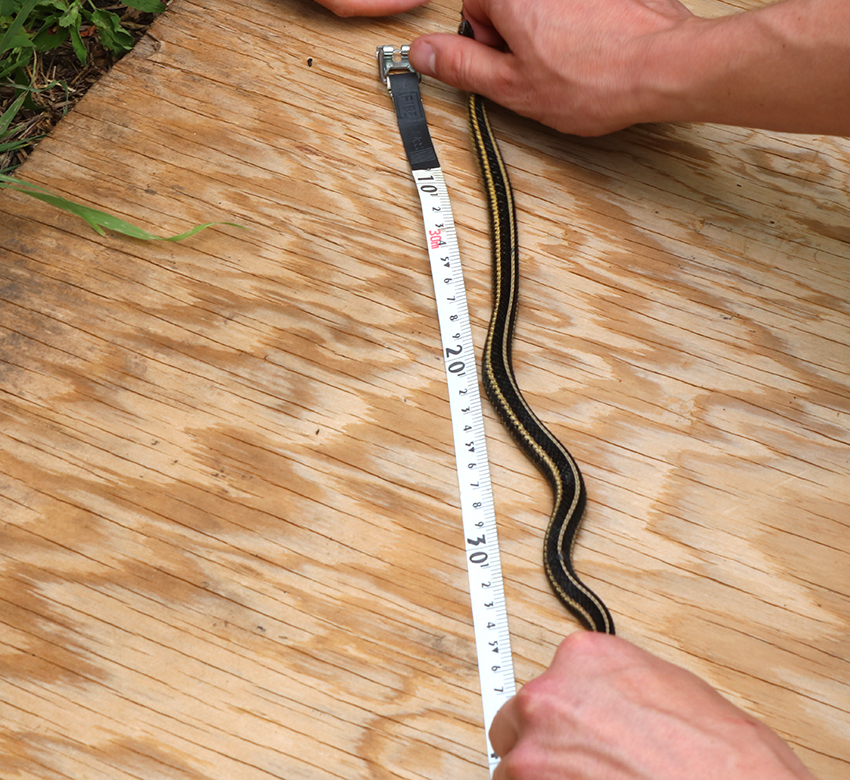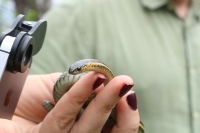Within Milwaukee, there are about nine different snake species who utilize its beautiful urban green spaces. Thus, as one of the new summer Research and Community Science interns, I was thrilled to learn that the Urban Ecology Center conducts snake surveys! Menomonee Valley specifically is home to the Butler’s garter snake (Thamnophis butleri) which is a species of concern within Wisconsin (and was previously on the endangered species list till 2014).  They are a part of the Family Colubridae, are the smallest out of the other five Wisconsin garter snake species, and are irresistibly cute. However, they can easily be mistaken for their local garter snake counterparts (especially when they hybridize- a nightmare for species identification). The best way to identify this species is via their distinct lateral striping pattern. The lateral stripe on this species varies from a light yellow to rich orange and is present on the upper part of scale row 2, scale row 3, and part of scale row 4. This is contrasted against its black, brown, and olive- colored dorsal scales (Figure 1).
They are a part of the Family Colubridae, are the smallest out of the other five Wisconsin garter snake species, and are irresistibly cute. However, they can easily be mistaken for their local garter snake counterparts (especially when they hybridize- a nightmare for species identification). The best way to identify this species is via their distinct lateral striping pattern. The lateral stripe on this species varies from a light yellow to rich orange and is present on the upper part of scale row 2, scale row 3, and part of scale row 4. This is contrasted against its black, brown, and olive- colored dorsal scales (Figure 1).
This species is found in Menomonee Valley because of its beautiful and unique ecosystem. Suitable habitat for this species includes an open canopy wetland and surrounding upland habitats such as prairies, sedge meadows, savannas, and even old fields or vacant lots. Unfortunately, populations have experienced a decline due to loss of habitat from fragmentation, alterations in hydrology from development, and severe weather from climate change. However, the Urban Ecology Center is taking action to restore both Menomonee Valley and its snake populations. Since I started interning here in June, I have been in awe of what the center has accomplished and the drive they have to keep Milwaukee a safe and green space for everyone. Before the UEC came to Menomonee Valley, the river was surrounded by a brownfield (bare ground where few plants grow) on one side and factories on the other. Now there is lush summer vegetation and prairie habitat for both people and Butler’s garter snakes to enjoy!
Not only is it important to monitor snakes because of their intrinsic value and important ecological roles, but snakes are indicators of environmental changes. One way we monitor snakes in the area is to conduct snake board surveys. What is that you may ask? Thankfully, the survey process is both easy to record and concise for analysis. Plywood boards (3/4in x 32in x 48in) are placed in an area with open canopy near wetland habitat in the springtime. Boards are then checked a few hours before sunset by simply flipping the board up and looking for critters underneath. 
If you’re lucky, you can catch an American toad hiding in a nest or a tiny meadow vole scurrying into the grass. If a snake is found, they are promptly scooped up for a further look. First, we then check and record the species. The weight is taken by placing the individual in a bag which is then weighed using a hanging scale. Then the little guys’ length is measured in centimeters from the head to the anal scale.  Lastly, the sex is found by using a small probe and is checked for previous markings. If they have not been marked, the research team marks a distinct scale so we can monitor the individual in the future.
Lastly, the sex is found by using a small probe and is checked for previous markings. If they have not been marked, the research team marks a distinct scale so we can monitor the individual in the future.
It is a very exciting experience filled with anticipation, sneaky snakes, grumpy toads, and the scent of musk in the air. By the end, your hands may have a peculiar odor on them, but your face will be smiling. The best part? Anyone who signs up to be a volunteer at the UEC can participate in this survey! Whether you have never held snakes before and want to challenge yourself or are a huge snake fan. Watch this video to learn more about Snake Research at the Urban Ecology Center:
Blog written by volunteer Vanessa Komada





